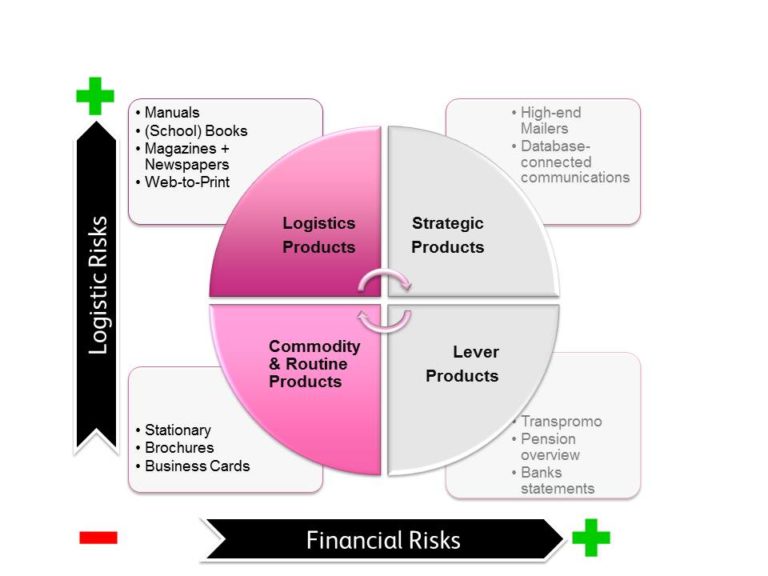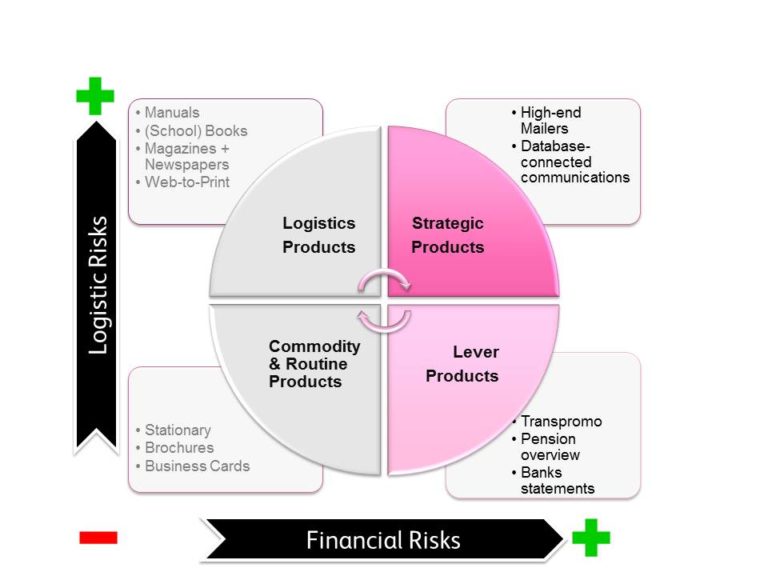
When print providers’ margins suffer from too much price competition, a period of management introspection usually follows. How can the print provider bring value that can restore healthy margins while meeting the customer’s evolving needs?
Xerox recently brought together three print providers who have confronted these issues and made successful transitions, to participate in a webinar, “Reinventing and Repositioning Your Business.” Barb Pellow of InfoTrends moderated the session, which was part of the Xerox Business Development Webinars series.
“In today’s ever changing communications world, printers of all sizes are realizing that it’s time to reposition themselves,” Pellow said. She then introduced the three print providers—CCG Marketing Solutions, Spectrum Creative Solutions and Pacesetter Enterprises, Inc.—whose stories offered a path to business reinvention.
1. Build a solid marketing strategy.
Ask yourself, what is your brand promise? What distinguishes you from competitors? What is your message about the value you bring and the problems you solve? “We do a lot of things really well, but so do many others,” said Bob Ross, director of Marketing and New Business Development, CCG Marketing Solutions. CCG has focused on the rigors of pharmaceutical fulfillment and uses pharmaceutical business processes throughout the company and across industries, as a competitive differentiator.
2. Define your targets.
The light bulb went off for Spectrum Creative when a credit union customer considered putting an integrated marketing campaign on hold because an elderly member complained that personal information—actually just the mailing address—was posted online. President and CEO Scott Mallen decided the firm was better off focusing “on a younger market where all these cool technologies work.” He stopped working with his customers in banking, credit unions and other industries to focus exclusively on supporting college admissions efforts, where Spectrum’s integrated campaigns have had unqualified success.
Pacesetter initially targeted a single market for its new integrated marketing programs, higher education fund raising, expanding into manufacturing and healthcare after some successes.
3. Communicate on your customer’s terms.
While college admissions offices are involved in selling the school to prospects, Spectrum’s Mallen notes that, “The one thing you never want to say is ‘sales.’ It’s taboo.” Instead he uses their term: recruitment.
CCG determines performance metrics by asking each client how they measure success, then lining up the program to report—and deliver—on those metrics.
4. Get the right product development and delivery in place.
Pacesetter began selling advanced services before it had solutions, relying on partners for the more complex capabilities. This approach “enabled us to learn from others, avoid novice mistakes and reduce our risk,” said Kim Gross, director of Sales and Marketing, Pacesetter.
Spectrum built its own content-managed customer relationship management marketing platform, which is, in effect, a single product that needs little or no customization for different clients, controlling costs. In addition, non-IT staff manages the system, further controlling costs.CCG not only applied its pharmaceutical expertise to its fulfillment business, but backed its strategy with nearly $8 million in investments, including a new fleet of Xerox iGen digital presses and new fiber optic network for optimal data transmissions.
5. Establish the right pricing and compensation methodologies.
The point of these initiatives is to rise above commodity pricing. Spectrum solutions bundles print into a total solution cost. Pacesetter gives its new solutions sales reps a higher base salary, shifting more to commissions as they come up to speed. “Commissions are based not on price, but on profit at the end of the campaign,” Gross said.
6. Hire or develop the right sales skills.
When Pacesetter moved into solutions sales, it kept the business separate from its traditional printing, hiring dedicated solutions sales reps. A sales coach provides initial training and ongoing counsel on specific pitches.
7. Execute on your marketing plan.
Pacesetter communicates regularly with customers about the changing brand, contacting each of them 12 to 15 times per year via a newsletter, phone calls and in-person meetings. Business has nearly doubled in the last seven years.
Spectrum’s top marketing tool is the webinar. The firm holds six to 10 per year, helping to establish Spectrum as a national expert in marketing enrollment and building its higher education client base to about 50 in just four years.In addition to aggressive outreach to its markets, CCG has established “CCG University” to help staff understand the company’s direction, cross train its employees, and build strong interdepartmental synergy. Successes include a Facebook initiative for Proctor & Gamble offering free product samples and other offers, and highly effective customer loyalty, lease renewal and competitive conquest campaigns for BMW that leverage personalized web, print and social media.
Pellow wrapped up the session by saying that, “You can’t be good enough for everybody, but you will always be the best for the one who deserves you.”
You can access a replay of the webinar here. The next session in the free Xerox Business Development Webinar Series is on “The Power of Interactive Print” on Oct. 8 from noon to 1 p.m., E.T. You can register here.
What sales strategies are helping you sell on value rather than price? What are you doing—or have your done—to reinvent your business?



